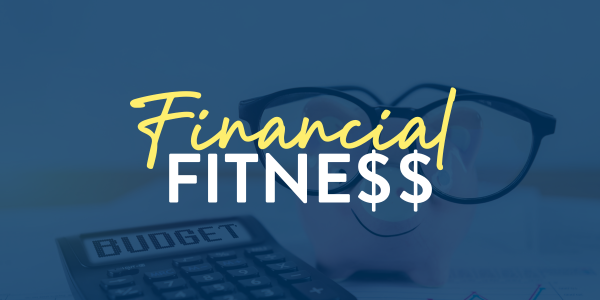
Qualifying for a mortgage when you’re self-employed doesn’t have to be a pain. It all comes down to organization. Whether you’re self-employed, commission-based, or a full-time or hourly employee, lenders are all looking for the same thing when you apply for a mortgage: a high likelihood you will be able to pay.
Unlike a W-2 employee, however, it takes a little more legwork to verify self-employed income. This is why you want to plan ahead and make sure all your ducks are in a row before you start the mortgage process.

Self-employed mortgage requirements usually entail more document verification and sometimes a lengthier look at your employment history. Fortunately, with a little time on your side, there are plenty of things you can do to make sure your mortgage application looks as stellar as possible when the time comes.
Understand That You Have Options
One of the biggest misconceptions about self-employed borrowers and mortgage programs is that you must use two years of tax returns to determine qualifying income. This is true for some loan types, including conventional loans, FHA loans, or VA loans. But it’s not the only path to homeownership for self-employed people.
Traditional loan requirements don’t always reflect the true financial picture of self-employed borrowers, who often have fluctuating income or business write-offs that lower their taxable income.
At APM, we offer flexible mortgage options tailored for self-employed, 1099, and gig workers. Our programs include alternative qualification methods such as bank statement loans, where lenders assess income based on deposits rather than tax returns, and asset utilization loans, which consider liquid assets as income.
These options provide a more accurate reflection of financial stability and make homeownership more accessible. Read more about these home loan programs here.
Create a Strong Credit Profile
As with any borrower, self-employed home loan requirements still include an evaluation of credit score, credit history, and overall financial health.
To improve your chances of qualifying for the best loan terms, it’s important to stay on top of your credit, reduce outstanding debt where possible, and ensure that your bank statements or asset records are well-documented before applying.
You can obtain your credit report free from any of the three credit bureaus or from www.freecreditreport.com. Go over your report with a fine-tooth comb. Contact the bureau if you find an error, need clarification, or have any questions surrounding your credit report.
A credit score of 720 or higher will usually get you a good mortgage rate, so make it a point to pay your bills on time and work out a payment plan for any debts you may have fallen behind on. Companies are typically more than willing to work with you if you simply communicate with them and show you’re making an effort toward resolving the debt.
Offer a Larger Down Payment
Though self-employed mortgage requirements can include a down payment of as little as 3%, many include a down payment of around 20%. A larger down payment is a win-win for two reasons.
First, it shows the lender you’re willing to put skin in the game. A higher number tells the lender you’ve made a serious commitment to owning a home. This is a commitment you’re not likely to walk away from—in the lender’s eyes, anyway—since you’ve invested a sizeable chunk of cash in the house.
The second reason a large down payment can help when you’re trying to mitigate the effects of self-employed mortgage requirements is that it lowers the size of the loan.
If you want to purchase a $425,000 home but only have $21,250 to put down (5%), you need to qualify for a $403,750 loan amount. On the other hand, if you can put down $85,000 (20%), you’ll just need to qualify for a $340,000 loan. Plus, you’ll likely secure a more favorable rate and lower monthly mortgage payments.
Improve Your DTI
After securing your tax returns and a list of your assets and debts, a lender will come up with your DTI, or debt-to-income ratio. This formula adds up all those debts, including existing monthly mortgages, loans, credit card payments, alimony/child support, and other outstanding balances.
It then divides that number by your income, which can include 1099 payments from clients if you’re self-employed and any supplemental income like rent, investments, dividends, retirement accounts, and child support/alimony.
The result is the percentage of your income that you would be spending on your mortgage and other debts. You want to keep your DTI as low as possible when qualifying for a mortgage; 43% or below is ideal.
Show a History of Self-Employment
You can be as free-spirited or spontaneous as you like in your social life, but lenders like to associate their borrowers with consistency, stability, and responsibility. In terms of self-employed mortgage requirements, this translates into a solid work history.
Lenders typically like to see that you’ve been in your current line of work for at least two years. The longer your self-employment history, the better. This is especially true if you can show a stable or increasing income over that time. This is true not only for self-employment but also for side hustles or other additional income sources.
If you are newly self-employed but in the same line of work you were in previously, this can help mitigate a shorter history—be sure to ask your Loan Advisor for details.
Provide Extra Documentation
The last two years of tax returns are just the tip of the iceberg regarding self-employed mortgage requirements. You may also need to supply three to six months of personal and business account bank statements (checking and savings accounts and investments). Additionally, a year-to-date profit and loss (P&L) and cash flow statement may be requested.
You may also need to provide your current balance sheet, 1099s from your paying clients, your most recently paid invoices, additional years of tax returns, and a letter from your accountant stating that your business is still active.
Those with gaps in employment history or income losses may also need to address these issues through a letter of explanation. Your accountant can assist with this as well. They can also help you adjust how you write off business expenses if this hurts your chances of qualifying for a mortgage.
Get Started Today
Getting a mortgage as a self-employed borrower can be easy when you choose the right mortgage lender and engage in some planning ahead of time. Click here to find an APM Loan Advisor near you, and we can get you started on the path toward homeownership, whether you’re self-employed or just thinking about making the transition.







